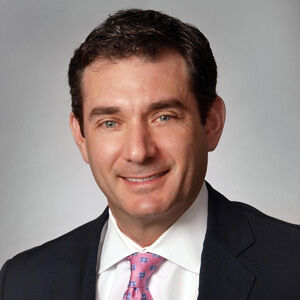Many of us in business have used the old saying, “better to ask for forgiveness than permission.” In the Paycheck Protection Program (“PPP”), there is no option to ask for permission, and everyone will need to ask for forgiveness.
Now is a good time for borrowers to get organized so that the PPP loan forgiveness process will go smoothly. Here are key points to consider:
Borrowers may not apply for PPP loan forgiveness until at least eight weeks after receiving the loan proceeds. Since principal and interest payments on the loan are deferred for six months, we foresee a two to three month period after the eight-week period ends when borrowers should make their loan forgiveness application to the lender who made the PPP loan. In addition, the employer share of OASDI is deferred for as long as loan payments are not forgiven, encouraging many to delay forgiveness until right before the payment date. These payroll tax payments deferred during the time the loan is outstanding will continue to be deferred until the required payment dates of December 31, 2021, and December 31, 2022, one half on each date.
Borrowers’ qualified expenses for which they will seek forgiveness will be those expenses incurred in the eight-week period after PPP loan is originated. This includes wages, health care expenses, retirement plan contributions, rent, utilities and interest on mortgages. Such amounts cannot be accelerated payments of expenses incurred for a future period.
If employees were furloughed prior to loan disbursement, borrowers should strive to bring those furloughed employees or replacement workers back on payroll as quickly as possible.
Remember that at least 75 percent of the forgiven loan amount must have been used to cover “payroll costs” (wages, health benefits, retirement plan contributions and state taxes on compensation) as defined for the loan application process.
There is no requirement for furloughed workers to actually be performing normal work duties. Many businesses, including many in the hospitality industries, are closed by public order. Whether recalled workers come to work and perform services or stay at home and do nothing, either is acceptable under PPP. The object of the program is to keep small businesses afloat and have a ready workforce that can come back to work when it is time to reopen. Workers rehired will no longer be able to claim unemployment benefits.
Borrowers will be required to provide proof of payment of PPP qualified expenses. These include wages, bonuses, commissions, tips, and other compensation similar to what was used in the loan qualification phase. Also included are cash payments for employer portion of employee benefits, employer contributions to retirement plans, rent, utilities, and interest on mortgages for company facilities. Some employers are considering additional discretionary retirement plan contributions for employees as a way of helping workers deal with the declining stock market and having more of their loan forgiven. Retirement plan contributions are not part of the $100,000 wage cap.
Borrowers should create a file and save those proofs of payment. These should include payroll reports from an internal or external payroll provider, proof of payroll payments, cancelled checks, ACH confirmations, wire confirmations, or other forms of receipt.
All payments for rent, utilities, and mortgage interest must be for leases, mortgages, or utility services that were in existence as of February 15, 2020. We recommend that borrowers gather lease agreements, mortgage documents, and utility bills for several periods prior to February 15, 2020, to confirm the existence of those obligations and services prior to that date.
There is no requirement for borrowers to establish separate bank accounts or separate general ledger accounts for tracking PPP loan proceeds and qualified expenses. In fact, given the difficulties with later classifying those expenses for financial statement and tax reporting, we recommend against establishing new G/L codes for these expenses.
There is no guidance currently that clarifies whether expenses must be tracked on a cash basis for the eight-week period beginning on the date the loan proceeds are disbursed which could be the middle of a pay period or if borrowers will be allowed to use the eight week pay beginning with the pay period starting after the first loan disbursement. Pending updated guidance we suggest tracking expenses and receipts for eight weeks after the first loan disbursement and perhaps continue until the pay period after the end of the eight week period.
Just as there have been many guidance updates and changes to the PPP program since the law’s passage on March 27, 2020, it would be reasonable to expect guidance for the forgiveness process in the coming weeks before the first wave of forgiveness applications are ready for processing. In fact, the SBA’s own Interim Final Rule issued on April 3, 2020, indicates additional guidance on loan forgiveness will be forthcoming.
Cherry Bekaert will provide further updates as they become available, and we will be ready to help borrowers with their PPP loan forgiveness applications.





